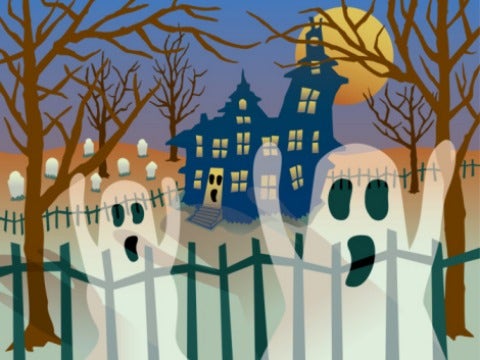Candy & Costumes: The True Meaning Of Halloween?
Did you know that Halloween comes from an old Pagan tradition called Samhain?

Halloween wasn't always about dressing up and gorging yourself on sweets. The history of Halloween actually comes from an old Pagan tradition called Samhain, meaning "end of summer," and marks the final harvest for the year. Generally celebrated on October 31, referred to as "spirit-night," there was believed to be a magical interval of time and space temporarily suspended, and the veil between the worlds lifted. It is a time to communicate with ancestors and departed loved ones as they journey through this world on their way to the Summerlands. They honor the Dark Mother and Dark Father, symbolized by the Crone and her aged Consort.
Originally, the Feast of the Dead was celebrated in Celtic countries by leaving food offerings on altars and doorsteps for the "wandering dead." Candles were lit and left in windows to help guide the spirits of ancestors home. Extra chairs were set to the table and around the hearth for the unseen guests. Apples were buried along roadsides and paths for spirits who were lost or had no descendants to provide for them. Turnips were hollowed out and carved to look like protective spirits, for this was a night of magic and chaos. Children became very active, pulling pranks on unsuspecting humans. People dressed in white, wore disguises made of straw, or dressed as the opposite gender in order to fool the Nature Spirits.
This was the time that the cattle and other livestock were slaughtered for eating in the ensuing winter months. Any crops still in the field on Samhain were considered taboo, and left as offerings to the Nature Spirits. Bonfires (originally called bone-fires, for after feasting, the bones were thrown in the fire as offerings for healthy and plentiful livestock in the New Year) were built, and stones were marked with people's names. Then they were thrown into the fire, to be retrieved in the morning. The condition of the retrieved stone foretold of that person's fortune in the coming year. Hearth fires were also lit from the village bonfire to ensure unity, and the ashes were spread over the harvested fields to protect and bless the land.
Various other names for Halloween and Samhain are All Hallow's Eve, Greater Sabbat, Third Harvest, Samana, Day of the Dead, Old Hallowmas (Scottish/Celtic), Vigil of Saman, Shadowfest (Strega), and Samhuinn.

